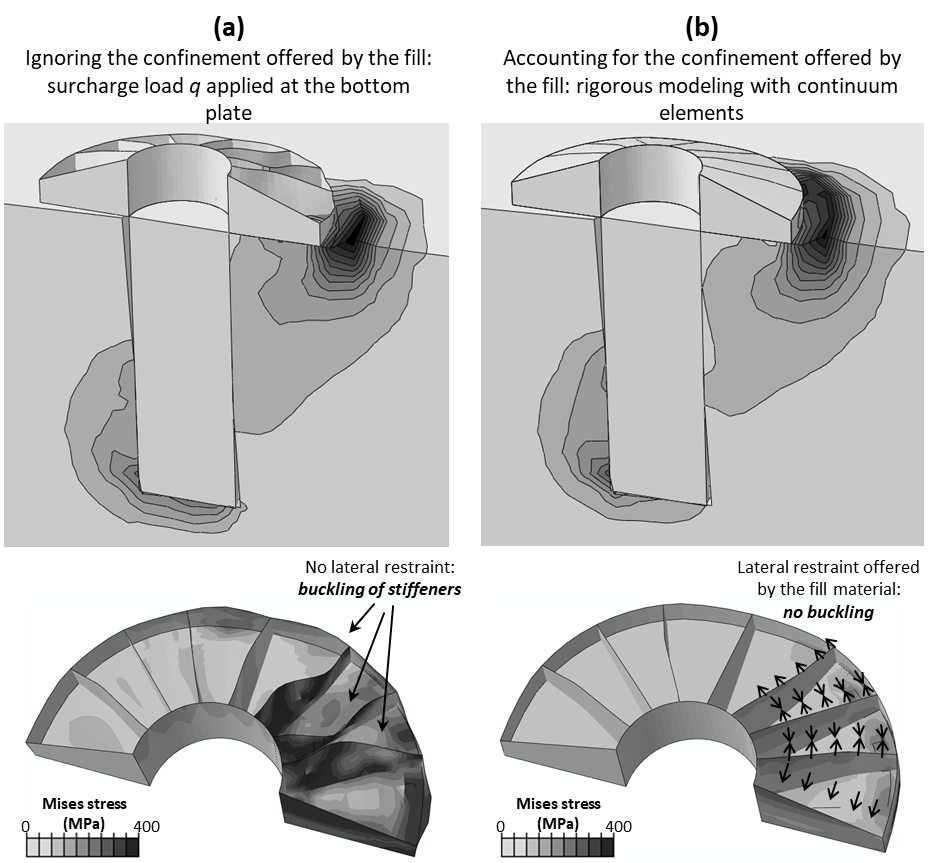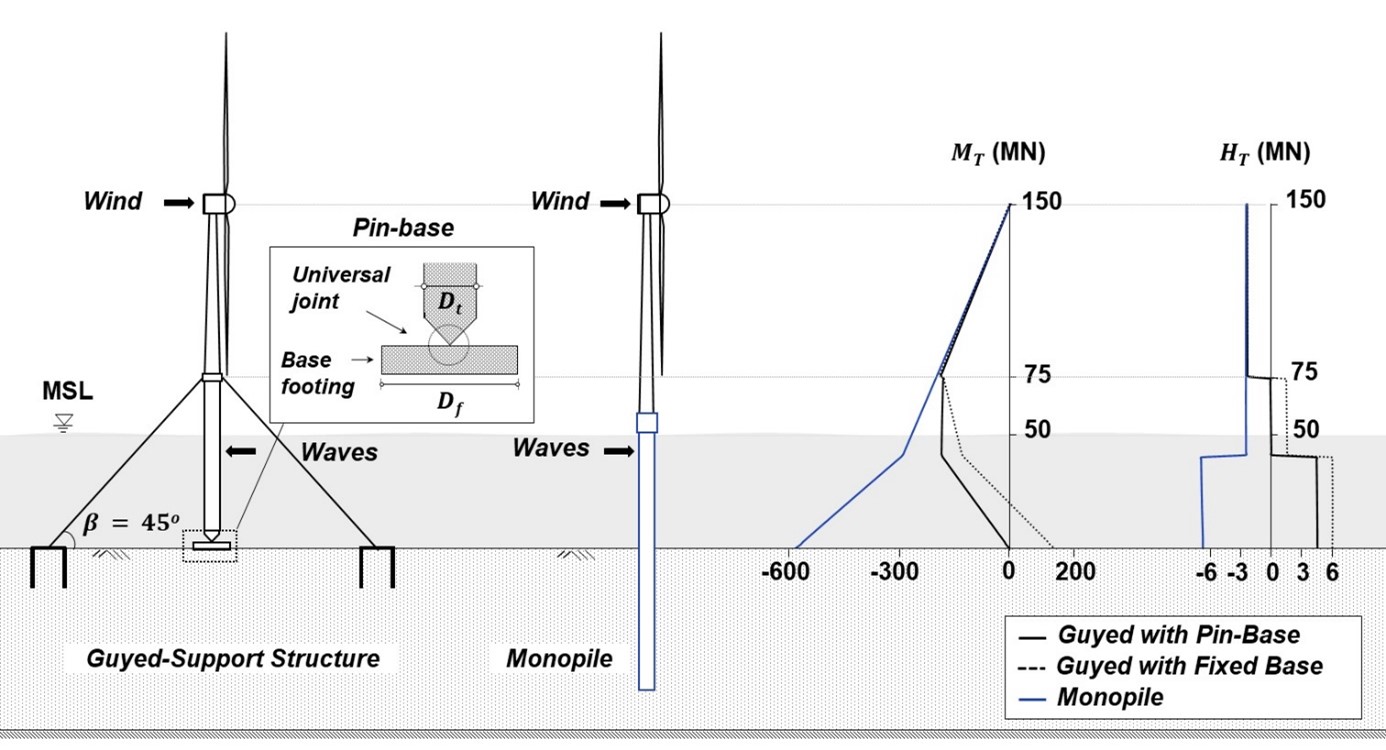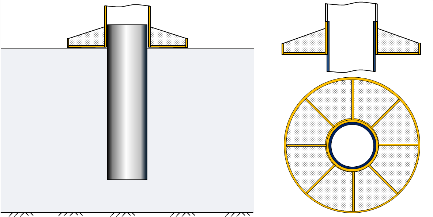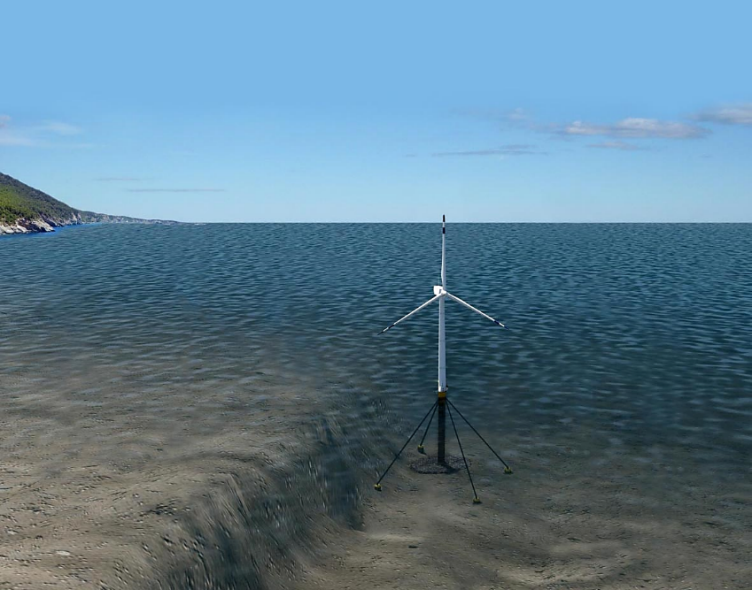Foundations for Renewable Energy
Almost one third of global CO2 emissions are related to energy production, calling for environmentally sustainable solutions. To address this challenge, the energy industry is turning to renewable energy sources. In the context, the EU has set as a target 32% of its energy to be produced by renewable sources by 2030. Wind power is recognized as one of the most promising such sources, and has seen major technological advances in recent years. Offshore wind turbines (OWT) are increasingly adopted by the industry. Offshore sites are more efficient and reliable, as they are characterized by stronger and more stable wind conditions. Moreover, space is abundant offshore, allowing the development of larger farms.
Despite their advantages, their development is impeded by their cost. The foundation cost may be as high as 35% of the total cost, calling for improved design and construction techniques and cost efficient solutions, which is the subject of our work. Employing validated numerical analysis methods, we have been exploring the long-term cyclic response of OWT foundations and the effect of combined environmental (wind and waves) and seismic loading. Our work has led to the development of a hybrid foundation concept, combining a monopile with a lightweight circular footing, composed of steel plates and stiffeners and backfilled to increase the vertical load (external page J69).

In our more recent work, we explored the potential of a cost-efficient and easy-to-install foundation scheme for Mega-Turbines in seismic regions. The studied guyed-support system comprises a compliant tower, tethered to the ground with an array of four pretensioned cables, moored to the seabed by suction anchors (external page J82). To facilitate installation, a single pinned connection is implemented at the tower base, which is founded on a circular shallow footing. Compared to conventional solutions, it offers the necessary support without resource to massive and difficult to construct foundations. By eliminating the moment transfer at the tower foundation, its design requirements are substantially reduced. To demonstrate its efficacy, we investigated the performance of the NOWITECH 10 MW reference turbine installed at 50 m water depth, in the seismically active region of North-Western Adriatic.

Selected recent publications

Anastasopoulos, I. & Theofilou, M., (2016). ‘Hybrid foundation for offshore wind turbines: Environmental and seismic loading’, Soil Dynamics and Earthquake Engineering, VOL 80 pp. 192–209. (external page J69)

Antoniou, M., Gelagoti, F., & Anastasopoulos, I. (2019). “A compliant guyed system for deep-sea installations of offshore wind turbines: Concept, design insights and dynamic performance.” Soil Dynamics and Earthquake Engineering, 119, 235-252. (external page J82)